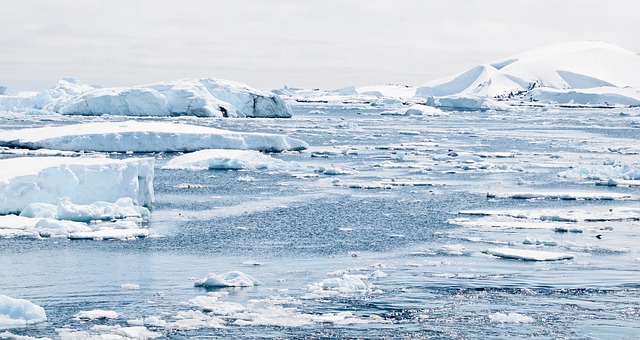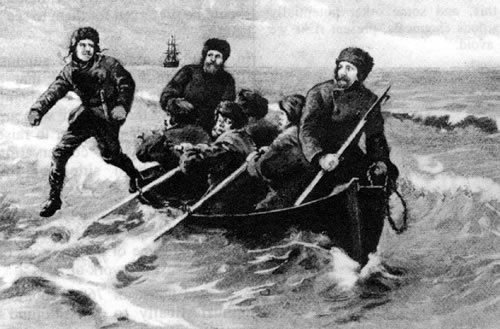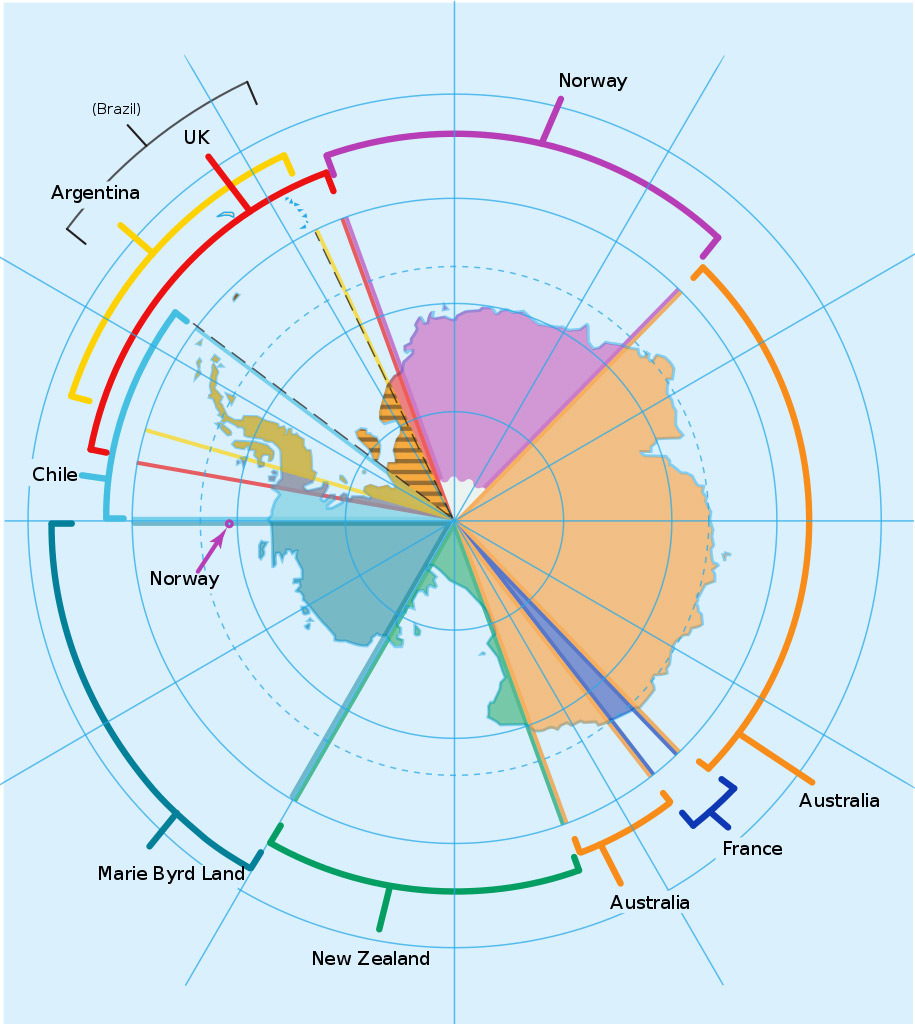
Antarctica…one of the most unique places on the planet. Even, when the whole world has fought multiple times for land and countries, Antarctica has been a completely Uncharted territory. The continent has NO countries or governments. Recently, an Antarctic Bill 2022 was passed in the Indian parliament, which concerns this place only. So, to understand the bill, and the history and geopolitics of the place, we need to delve into this COLD territory.
An Uncharted Territory?
When we say that it is uncharted territory, the main reason behind this is of course its temperature, which goes as down as -90 Degree Celcius. It is also the ‘windiest’ place on earth, with storms as powerful as 300 km/hour occur (powerful enough to make someone blind). Also, quite surprisingly, it is one of the ‘driest’ places on earth. The reason behind this is that only 51mm of rainfall takes place here. and anyways, whatever rain does happen, immediately turns into ice…HA HA. But, despite all this, it is not as uncharted as it seems.

Pic: The first ‘probable’ but disputed landing on Antarctica
A Brief History of Antarctica
If we look historically, there are references to this place from as back as the 1500s. But, the proper reference was most probably given by the Greeks. They had named the Northern end of the earth ‘Arctos’ which became the Arctic. Similarly, they assumed that there must be a southern end to the earth as well, and hence named it ‘Ant-Arctos’ which eventually became the Antarctic. Then, in the French mas, we get the reference of Antarctica as TERRA AUSTRALIS INCOGNITA (Unknown Southern Land).
In 1773, British explorer James Cook became the first person to travel here, but he returned back from around 150km away from Antarctica, looking at the huge icebergs and heavy winds. He even said, “I can be bold to say that no man will venture farther than I have done and the land that lies to the south will never be explored”. But, he was proved wrong around 50 years later, when a British ship did land there. But, interestingly there is no answer for who was exactly the FIRST MAN to land there. Because the travellers of the ship have different versions among themselves about who landed there first (as you can see in the above pic). So, the first undisputed landing on Antarctica happened in 1896 when a Norweigian ship named the ‘Antarctic’ reached there.
Also Read: My Article on the Fall of the Rupee
The Heroic and Colonial Eras of Expeditions
After that, many landings started happening on the continent. The early 1900s are considered the ‘Heroic Years of Antarctica’. During this time, one after the other expeditions were carried out in the place for scientific purposes. It also led to many scientific discoveries there. For example, the discovery of ‘Mosses’ confirmed the existence of plants there.
But, the following years were not that positive. 1908-1942 are considered the ‘Colonial Years of Antarctica’. In this period, 7 different countries Argentina, Norway, UK, Australia, Chile, New Zealand and France laid their claims on the place. Other than this, the US, Belgium, Sweden, and Germany were also conducting expeditions here with the aim of new discoveries. In 1939, during Hitler’s regime, a German expedition was also carried out. They even dropped a metal Nazi SWASTIKA on the place.

Pic: The POLITICAL Map of Antarctica
The Antarctic Treaty
Slowly, many countries started setting up their bases in Antarctica, with evil intentions. The bases were being set with the aim of intelligence bases, though they claimed they are doing this for research purposes. The only aim was to somehow acquire land on the uncharted continent. The countries started making claims on the land. It soon became clear, that a serious rivalry had started, as claims of one country started overlapping with that of the other. As we can also see on the map, the claims of Argentina, Chile and the UK were overlapping. Finally, the Soviet Union and the US too entered into the game. Soviet issued a clear advisory that if anyone sets their bases in Antarctica, it won’t be good.
In 1958, US President Eisenhower called out for a proper treaty among the nations to demilitarize the place. Finally, on December 1, 1959, the Antarctic Treaty was signed. The treaty finally came into existence in 1961 with 12 countries. Currently, 54 countries are a part of this treaty, but only 29 of them have got voting powers. Its headquarters lie in Buenos Aires. In the treaty, the main points were; that it will be only used for peaceful purposes, everyone will have the right of doing scientific investigations, and the results of the scientific investigation will be made freely available. The International Council of Scientific Union also formed a special committee for research on Antarctica. Under this, around 4500 scientists from different countries go there for research every year. But, the drill is that the treaty will come to an end in 2048.

Pic: The Antarctic Act 1959 was signed in the year 1959
India in Antarctica
India has recently passed a bill on Antarctica. But, surprisingly, India initially was quite reluctant to do this. India during PM Nehru’s regime was of the opinion, that the Western countries and the big powers are simply trying to exert their control on the continent. But, PM Indira Gandhi, sensed that now the time has come that India too needs to enter the territory. So, India carried out its first expedition in 198, through an ice breaker ship named ‘Polar Circle’, which India had borrowed from Norway. It was done with utmost secrecy under renowned marine biologist Dr Syed Zahoor Qasim. This was havoc for the foreign countries. In fact, foreign media reported it as “Indians quietly invade Antarctica”. Actually, India was not a part of the Antarctica Treaty by then, so it was ILLEGAL for India to send an expedition there.
Finally, India joined the Antarctic Treaty in 1983, and also got consultative rights in the very same year. So, this will definitely go down as a great diplomatic display from India, that too back then. Currently, India has 2 research stations there, namely, Dakshin Gangotri and Maitri where geology-related studies are conducted. Indian Antarctic Programme is a multi-disciplinary and multi-institutional programme under the control of the National Centre for Polar and Ocean Research in Goa. It was initiated in Goa in 1981 and has so far completed 40 expeditions. Now, let me also tell you about one great discovery there. During one of the researches, Indian scientist Sudipta Sengupta made mega research that the Schirrmacher Hills of Antarctica were actually a part of the ‘Fault Line’ of the Indian subcontinent. With time, the Indian subcontinent got flown into Tibet, after which the current Indian subcontinent was formed.

Pic: India’s first exhibition on Antarctica in 1981
The Concern of the Antarctic Environment
Later, two big features were added to the Antarctic treaty. In 1980, the Convention on the Conservation of Antarctic Marine Living Resources (CCAMLR). It was done for the protection, preservation and conservation of the Antarctic environment and the living resources there. And, in 1991 an Environmental Protection Treaty also called MADRID Treaty was signed. It designated Antarctica as a “natural reserve, devoted to peace and science”.
But, now the worry is that the Antarctic Treaty will expire in 2048. A 1992 report estimated the existence of 19 billion barrels of oil beneath the Antarctic continent. So, currently, these oils can’t be extracted both because it’s quite expensive and difficult and also because of the existence of the Madrid Protocol and Antarctic Convention. But as we know that the Antarctic Treaty is going to expire in 2048. So, we don’t really know what will the greedy countries do to extract the oil. Also, new technologies coming up and ice melting due to climate change will further put Antarctica in danger of exploitation.
Also Read: My Article on the WATERGATE Scandal
The Indian Antarctic Bill 2022
The Indian Antarctic Bill was introduced in the Budget Session by Union Minister Jitendra Singh. Now, in the recently concluded Monsoon Session, the bill was finally passed. It aims at having “India’s own national measures for protecting the Antarctic environment as also the dependent and associated ecosystem”. Actually, the government expects activities to increase in Antarctica, so it feels that some set of protocols must be formed.
- The bill now prohibits drilling, dredging, excavation or collection of mineral resources or even identifying anything except for research purposes. It also prohibits any damage or disturbance to native plants, birds, seals, or animals due to any firearms, vessels or helicopters. Also, no one can dispose of garbage, non-sterile oil, or radioactive wastes here.
- The bill prohibits any change in the biological nature of the continent, by removing soil or any biological material or introducing any new animals, birds, plants or microscopic organisms that are not part of the continent.
- The bill extends the jurisdiction of the Indian Courts in Antarctica, over crimes committed by Indians or foreigners, who are part of the Indian expeditions. lt also sets a separate court to try the cases that are committed ‘in’ Antarctica with the provisions of penalty ranging from 1-7 years and a fine ranging from 5 lakhs-1 crores.
- A committee will be set comprising high-ranking officials for the cause, having experience in Antarctic and geopolitical fields. Their job will be to assign permits, ensure compliance, obtain reviews and also monitor the fees.
- Now, anyone entering the research area needs permission. An elaborate permit system will also be brought for this purpose.

Pic: Indian Research Base in Antarctica
An Ice-CHILLING Future Awaits Antarctica
So, we saw how many complexities lie in the world of this so-called ‘Uncharted’ territory. The history and geopolitics regarding it have been just so turbulent. How countries tried to exploit and claim the territory and how finally one after the other treaties came for its demilitarization. Also, India’s episode in the territory is a story in itself. This bill is further an extension of India into the continent. But, now we saw that the future looks looming for the continent with the treaties set to expire soon. We already know about the track record of humans in exploiting any natural resource. We are already witnessing its result in the present climate change. While we enrich ourselves in the knowledge of the COLD continent, we must also HOPE that the worst is behind us.


To know about the past, present and future of the world Antartica is a place to visit.
A really detailed article of significance of Antartica and the new bill.
Hats off yet again to the deep research